Table of contents
What is the wolf archetype?
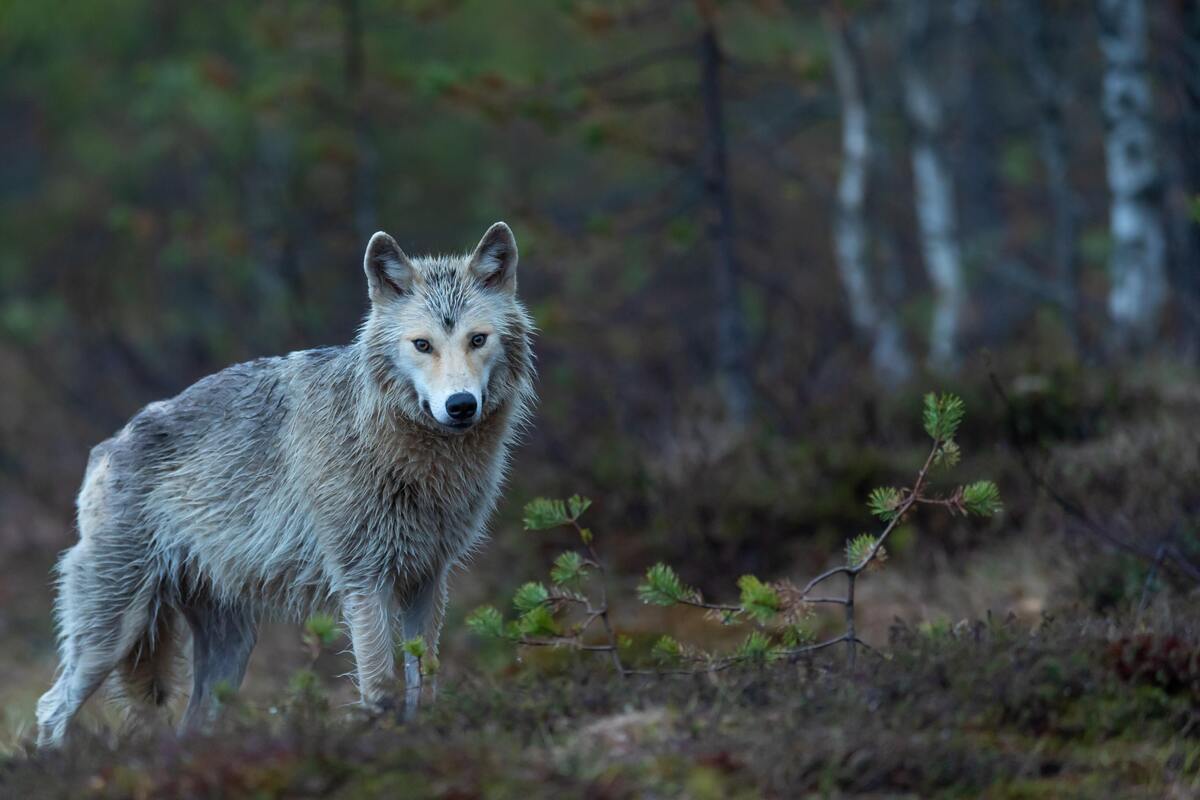
The archetype of the wolf is a model that represents a kind of prototype or a set of impressions about this animal. Therefore, to understand it, it is important that you first know the characteristics and qualities of this beautiful animal.
Unfortunately, as it happened with other animals, the wolf was stigmatized and persecuted in many cultures for being considered a bad animal, a fact that does not match the reality of this powerful animal.
By studying the behavior of this animal in nature, you will realize that what they tell in children's stories is not true. The wolf is, in fact, an animal that has many virtues such as its sense of loyalty, intelligence, sagacity and adaptability, besides being extremely sociable, friendly, observant and strategist.
In order to dissolve the misunderstandings about the archetype of this powerful animal, we have sensed in this article the important information for you to understand the energy of the wolf. In it, you will understand its physical and spiritual characteristics and get to know different conceptions about the wolf in several cultures around the world. Check it out.
Wolf animal characteristics
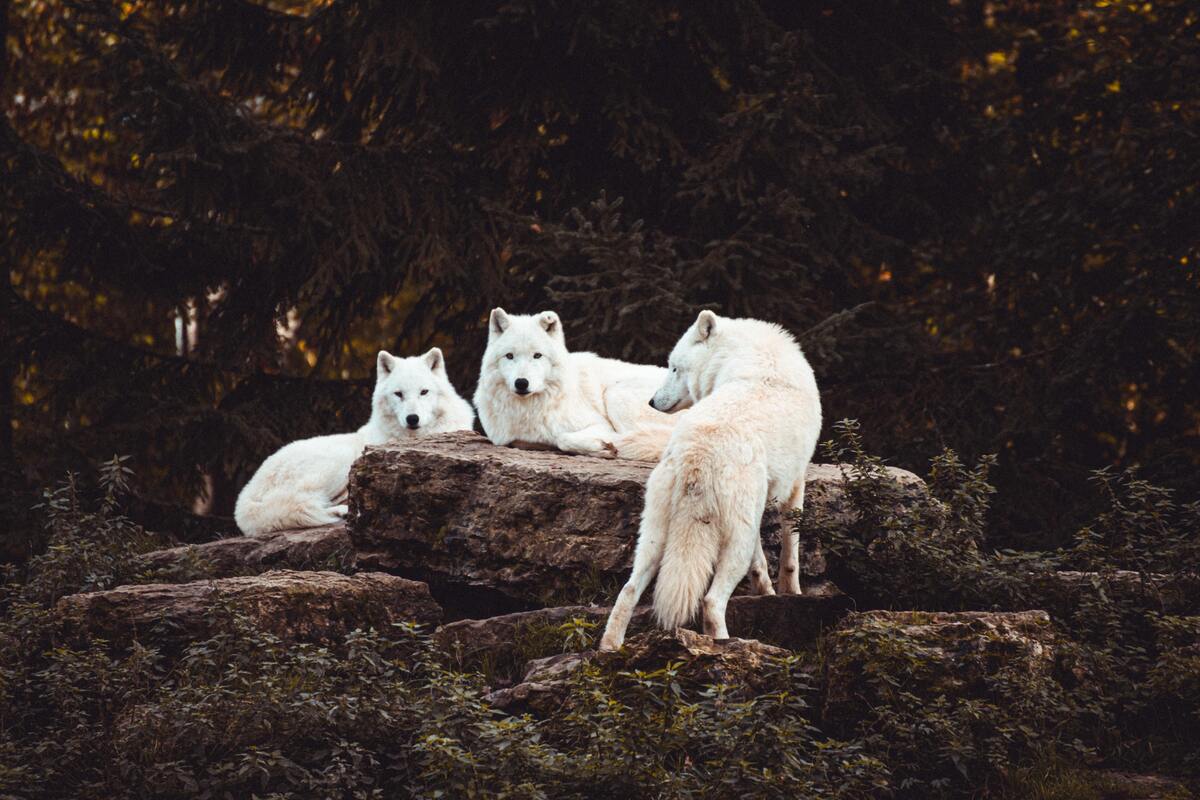
The wolf is a mammal that belongs to the same family as the dog. Although the most popular wolf figure is the gray wolf of the species Canis lupus, an inhabitant of the Northern Hemisphere, there are several species of wolf predominantly in the Northern Hemisphere.
In this initial section, we will present the physical and behavioral characteristics of this beautiful animal so you can understand its archetype. Check it out.
Hair of the wolf
The wolf has a body covered with hair, very similar to many breeds of domestic dogs. Its hair is long, whose colors range from gray to completely dark and black tones. However, in some regions, its hair may acquire a reddish hue as an adaptation to the environment.
The colors of wolf coats also vary according to the region of the body. For example, the lower part of the muzzle and neck may have lighter colored coats than those found on other areas of the body. Some wolves may even have darker stripes or markings on their paws.
Eyes of the wolf
The piercing eyes of wolves also vary in color and can be yellow, green or even dark brown. The area around the eyes can also have light rings in the coat, with dark spots that can extend to the back of the ear.
Body of the wolf
An adult wolf has a body length that varies from about 105 to 160 cm. That is, wolves are large animals that can even be taller than adults when standing on their hind legs.
The wolves' tails can reach 50 cm in length and, as with many animals in nature, the male is taller than the female.
Weight of the wolf
The wolf is a relatively light animal. An adult male can weigh between 34 and 49 kg, while the females are a little lighter, weighing between 30 and 42 kg.
Longevity of the wolf
In the wild, a wolf can live an average of approximately 13 years, when free in the wild. This is equivalent to the average longevity of many domestic animals such as dogs. As with size and weight, longevity can vary according to the sex of the animal.
Wolf feeding
The wolf is a carnivorous animal, so they usually prey on other animals. They usually feed on large prey such as elk, deer and wild boar. However, that doesn't mean that their diet is only based on large animals, as they can also feed on small rodents, sheep and other domestic animals.
Also, they may feed on food scraps left in household garbage. Due to their feeding habits, wolves usually live in regions where food is easier to find available.
Therefore, it is common for them to approach properties such as farms to feed on livestock, which makes them easy victims for hunters.
Alcateia
The wolf is a mammal that lives in groups called packs. In nature, packs are made up of family groups, in which tasks defined by the parents occur. In general, the reproductive male is responsible for foraging for food, while the female usually takes care of the pups.
Normally, the pack is formed by the reproductive couple and the pups of that year, but it is also common that remnant pups of litters of the previous year also remain in the group. There is also the inclusion of members that are external that have some kinship with the progenitors of the pack.
The size of the pack may also depend on the availability of food in the area. In the pack, only one pair can breed and both male and female reach breeding maturity at about 22 months of age.
Characteristics of the wolf archetype
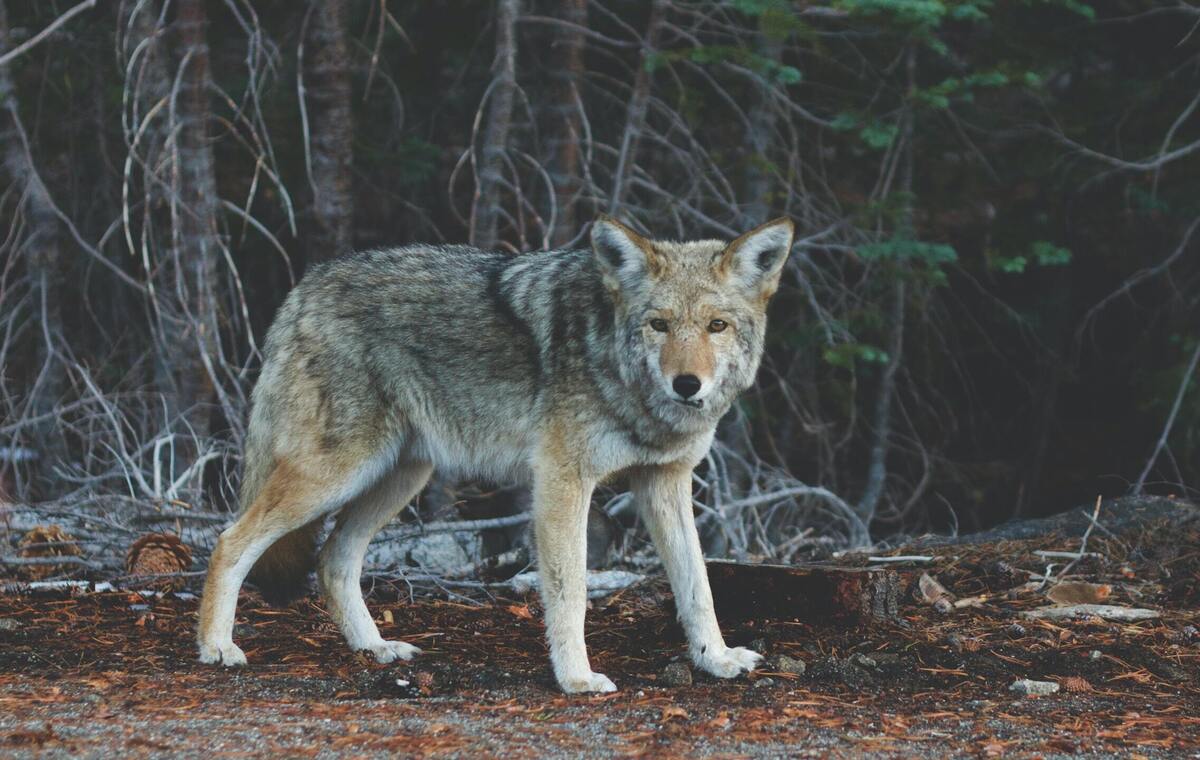
The wolf is a fascinating animal that presents very typical characteristics. Among them are sociability, the ability to work in teams, the maternal instinct in the case of females, strategic thinking, intuition, freedom, courage, fertility, harmony and the strength brought by their howls. Check details about these characteristics below.
Sociability
The wolf is an extremely social animal. Therefore, sociability is one of the main characteristics of its archetype. In a pack, it is important to work in groups. Therefore, it is necessary for each animal to be sociable to accomplish its tasks.
Also, sociability makes the pack stable and protected from possible threats, so if you want to improve your rapport with people to make friends, learn to go out more to explore the world and work in groups, the wolf archetype is the most suitable for you to learn to develop these skills.
Teamwork
The sociability of the wolf is justified by another essential characteristic of this animal: teamwork. Wolves are animals that live very well together, in a kind of society in which each individual is responsible for the success of the group.
In a pack, each wolf has a specific function and the work of each wolf is therefore essential. If you want to develop your abilities to exercise teamwork, work with the archetype of the wolf.
Regardless of your position in the company, family or personal life, the wolf will inspire confidence and bring more cohesion to your group endeavors, freeing you from competitive environments and unnecessary stress.
Maternal instinct
Wolves are extremely zealous animals with their pups. Therefore, there is a very strong parental instinct in the progenitors of a pack. Even though females spend more time with their pups due to their duties in the pack, males also exercise their protective function by taking care of their pups.
Therefore, the wolf archetype should be worked on by those who wish to develop a better sense of parental care and protection and be more present in the lives of their children. If you wish to establish stronger bonds with your children, the wolf is one of the animals you should align yourself with.
Strategy
Due to the conditions in which wolves live, it is important that they possess a very keen sense of strategy.
In order to live in the wilderness, wolves need to organize themselves into groups and find the best strategies to overcome the adversities of the surrounding nature, such as food scarcity, threats or even extreme weather conditions in the places where they live.
His slender body allows him to evade attacks and contributes to his strong strategic sense. To develop your strategic sense, work with the wolf archetype, for then you will learn to plan your steps clearly to reach your goals quickly.
Intuition
The wolf is an extremely observant and analytical animal. In addition to these powerful abilities, the wolf is believed to be an animal of keen intuition.
For this reason, the wolf is an animal to turn to when you need to develop your intuition, especially when you feel lost or need to find answers to important questions in your life and thus make decisions.
Wolf intuition is also ideal for assigning roles and functions to people, classifying them, so use it whenever you need to read people better.
Freedom
Being a wild animal, the wolf has been associated with the notion of freedom. Far from imposed tethers, wolves can develop a practical sense for living together and have the chance to walk alone as a way of opening up the unknown and getting to know more about themselves.
Because of this belief, the wolf is invoked to bring this sense of freedom into your life, so that you will be able to free yourself from what is holding you back from being the best version of yourself. Also use this archetype to learn how to walk on your own and develop your self-knowledge.
The power of the howl
One of the most striking characteristics of wolves is undoubtedly their ability to howl. The howl of a wolf is a sound that evokes chills, strength, attention and respect about these powerful animals. Although there is a belief that the wolf howls more during the full moon, this is not true.
The power of howling is mainly used for communication between the animals of the pack. The alpha wolf, the male in charge of the pack, often howls in different ways to call for help or pass other messages to the other wolves. In addition, howling can be a sign of territory demarcation.
Therefore, you can use the wolf archetype to firm up your location, defend your territory, and find the people who are part of your spiritual pack. From a spiritual perspective, howling can be a way to drive away negative energies and obsessive spirits away.
Courage
The wolf is a fearless animal by nature and is therefore a symbol of courage. Because they are fearless animals, they often take on larger animals and use their teamwork to achieve their goals and protect themselves from danger.
If you have fears, it is important that you work with the energy of this powerful archetype, for the wolf will teach you to trust yourself more and push fear away. The wolf also brings with it the opportunity to overcome trauma and be who you are, gaining energy to face everything and everyone to be who you really are.
Harmony
The wolf is often regarded as an animal that carries the energy of harmony. Due to its other characteristics, the wolf has learned to find the right moment to act, managing to live peacefully with even its greatest difficulties.
Since the pack is a family environment, the wolf can be invoked to bring peace in family and professional relationships, harmonizing tensions and bringing more balance. The wolf also teaches that harmony can be achieved not only through the blood family, but also with the bonds of friendship that are created along its journey.
Fertility
The association of the wolf with fertility involves two major factors. The first concerns their ability to move in groups, which shows that they are animals that reproduce and interact easily.
According to this belief, women who had difficulty conceiving a child would call for the energy of the wolf so that they could generate a life and be able to create their own pack.
Once it was noticed that these calls brought luck and resulted in pregnancy, wolves became symbols of fertility. Consequently, their archetype should be invoked by all those who wish to be fertile and have a child.
Symbology of the wolf
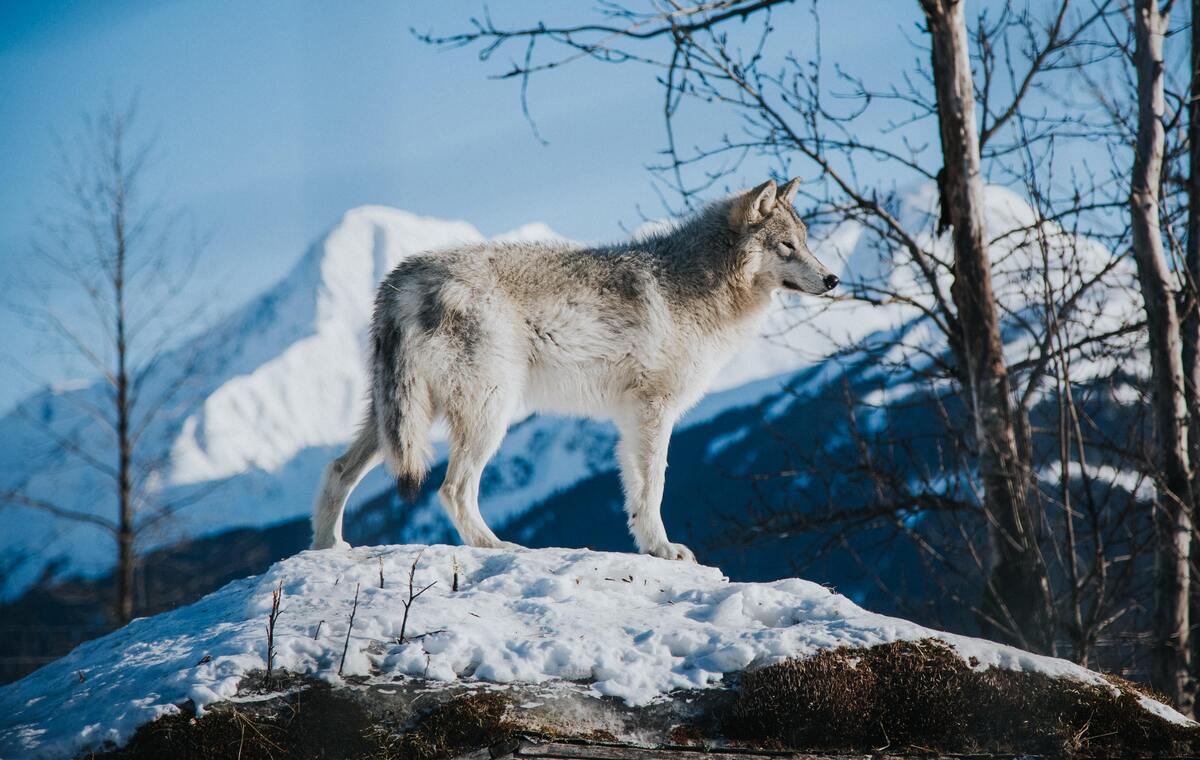
The wolf is an animal that is present in several cultures around the world, especially those present in the western and eastern portions of the Northern Hemisphere. Therefore, each culture associates this animal with different symbols, meanings and myths.
Since each culture presents a different interpretation of the energy of this animal, we present its meanings according to Shamanism and various mythologies such as Egyptian, Chinese, Greek and Roman. Check it out.
The Wolf in Shamanism
In Shamanism, the wolf is related to protection and strength. Therefore, it is considered a guardian animal, protecting all those under its watch. The wolf is also seen as an animal that establishes a link between the physical and the spiritual world, acting as a passage between the veil of the visible and invisible.
Wolf medicine is related to fighting fear, so the wolf is usually worked on in shamanic rituals to find the cause of fear and fight it. He is a totem considered the Master of the Soul, since he is linked to wisdom, intuition, generosity, creativity, sociability and action. The wolf is also a rescue animal of our true nature.
Egyptian mythology
Although there are no mentions of wolves in Egypt, an animal from the wolf family is present in Egyptian mythology, the jackal. This wolf-like animal is considered a subspecies of the golden wolf and is associated with Anubis, the Egyptian god of the underworld.
Jackals are seen as animals that transit between the world of the living and the dead, acting as a guide to the spiritual plane. Therefore, it was very common to find jackals near Egyptian tombs.
Greek Mythology
In Greek mythology, there is the origin of the myth of the werewolf, a man capable of transforming into a wolf during a full moon. According to the myth, Zeus, the greatest of the gods, learned that Lycaon, son of the king of Arcadia, had broken the law of hospitality by killing foreigners who came to his house.
To check on Lycaon's atrocities, Zeus knocked on his door asking for shelter and was accepted. After accepting him, Lycaon tried to sacrifice the god in disguise, arousing his fury. Zeus then cursed him, turning him into a wolf.
In Greek mythology, the wolf is also present in the god Hades, lord of the underworld, who wears a cape made of wolf skin.
Native Americans
The wolf was seen as a spiritual guide for many Native American Indian peoples. Through the archetype of the wolf, one can have spiritual ascension and improvement in life. The wolf was also seen as a messenger of the spirit world.
Their howls are believed to be messages that can be transmitted between the physical world and the spirit world. The wolf is also seen as a symbol of strength, endurance, fellowship, loyalty and ancestral wisdom.
Celtic Culture
For the Celtic peoples, the wolf was seen as a protector. Its main functions were to guard the night and protect the sacred groves, where Celtic rituals were practiced.
ancient Rome
In Rome, the wolf was considered a sacred symbol. According to the myth of the founding of Rome, the twins Romulus and Remus were saved, raised and suckled by a she-wolf. The wolf was seen as a symbol of strength and endurance, so their generals and emperors had wolf pelts to represent their power.
Chinese Mythology
According to Chinese mythology, the wolf is a symbol and emblem of courage, heroism and bravery. The founder of the Mongol Empire, Gengis Khan, considered the historical precursor of the Chinese dynasties, had the wolf as his symbol.
More about the meaning of wolf
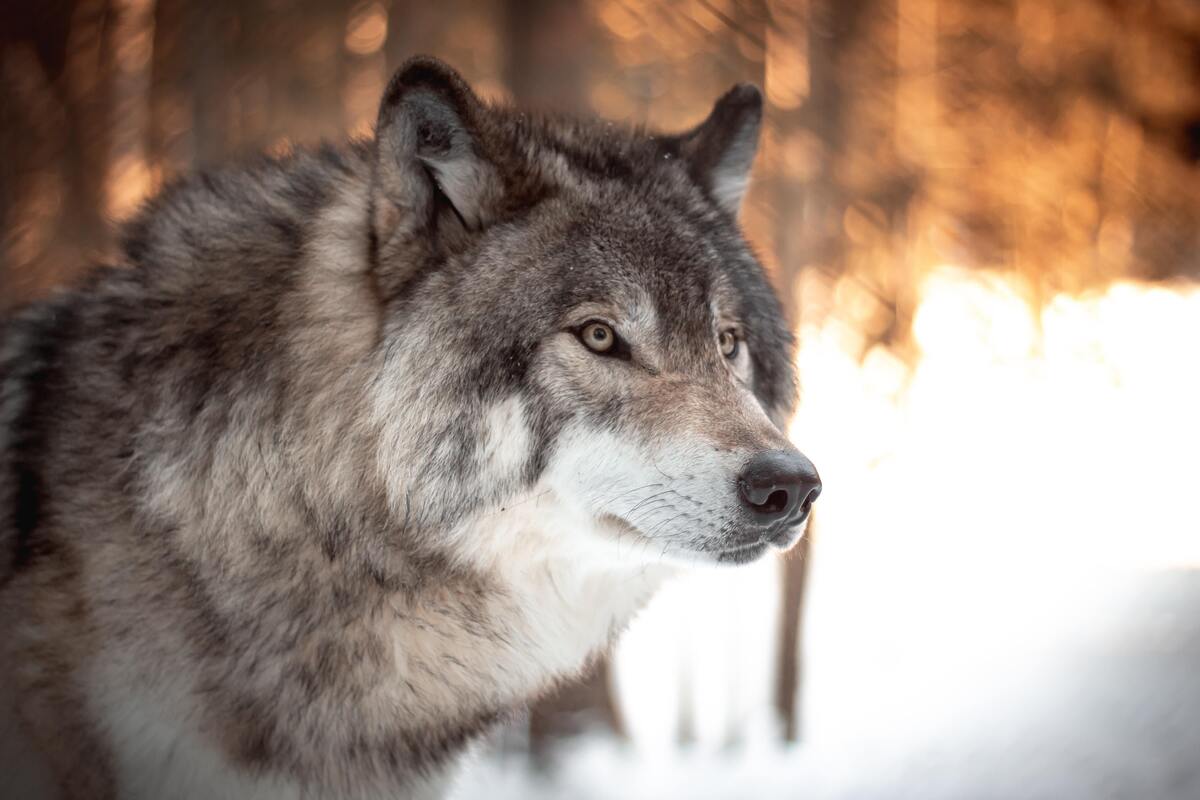
The meanings of the wolf go beyond the symbols present in different mythologies. Its cultural component is also related to the stories told to children, for example.
Therefore, we present in this section an expansion of the meaning of this powerful animal, presenting a look at children's stories, its psychic archetype and the meaning of wolf dreams and tattoos.Check it out.
Children's stories
Many children's stories address only the stigmatized, negative side of the wolf. In stories such as the Three Little Pigs and Little Red Riding Hood, the wolf is seen as a cunning, angry villain capable of destroying and causing harm to the other characters in the story.
The wolf does possess a ferocity, but it is only activated to defend his pack and territory. What happens in children's stories is that many of the typical characteristics of men are transferred to animals as a way to present them to children in a more playful way.
So when telling stories to the children in your life, remember to deconstruct the idea that the wolf is an evil animal, because, as we have shown, it is not.
Psychic archetype
The wolf is often used as an allegory, in which its nature is associated with the female instinct. In the bestselling book Women Who Run with the Wolves, Jungian psychoanalyst Clarissa Pinkola explores this association, investigating about the repression of the natural female instinct throughout history.
For Pinkola, it is important that women rescue the wolf that exists inside them from an exploration of the psychic archetype of the wolf from the female unconscious. Only through this search it will be possible to break what was imposed and repressed in women by society.
To dream of a wolf
To dream of a wolf has different meanings, depending on how this fantastic animal appeared in your dream. Therefore, it is important that you take note of this type of dream, so that from its details you can understand the message of the Universe.
If you have been attacked by wolves, it is a sign of unresolved emotions in your subconscious related to someone with whom you have quarreled or are upset. If you have had a wolf as a pet, it signifies loyalty. If you dreamed that you trapped a wolf, beware, as it indicates a time when you are feeling stagnant and trapped.
If you saw wolf pups, it is a sign of new opportunities and spiritual growth. If you saw or heard a wolf howling, it is a sign that you need to express your inner desires, because it is only then that you will be able to manifest them.
Wolf Tattoo
The wolf tattoo is used as a symbol of the emblematic characteristics of this mysterious and fascinating animal. Therefore, it embodies in its wearer loyalty, intelligence, strength and the courage present in the true nature of the wolf.
It also symbolizes family and touches on themes like devotion, love and luck. Since wolves howl to mark territory, wolf tattoos also signify power, courage and insight. Therefore, people who have wolf tattoos attract these traits into their life.
If you wish to manifest the characteristics of the wolf archetype, this is the most effective and permanent way to attract them to you.
What does the wolf archetype teach?
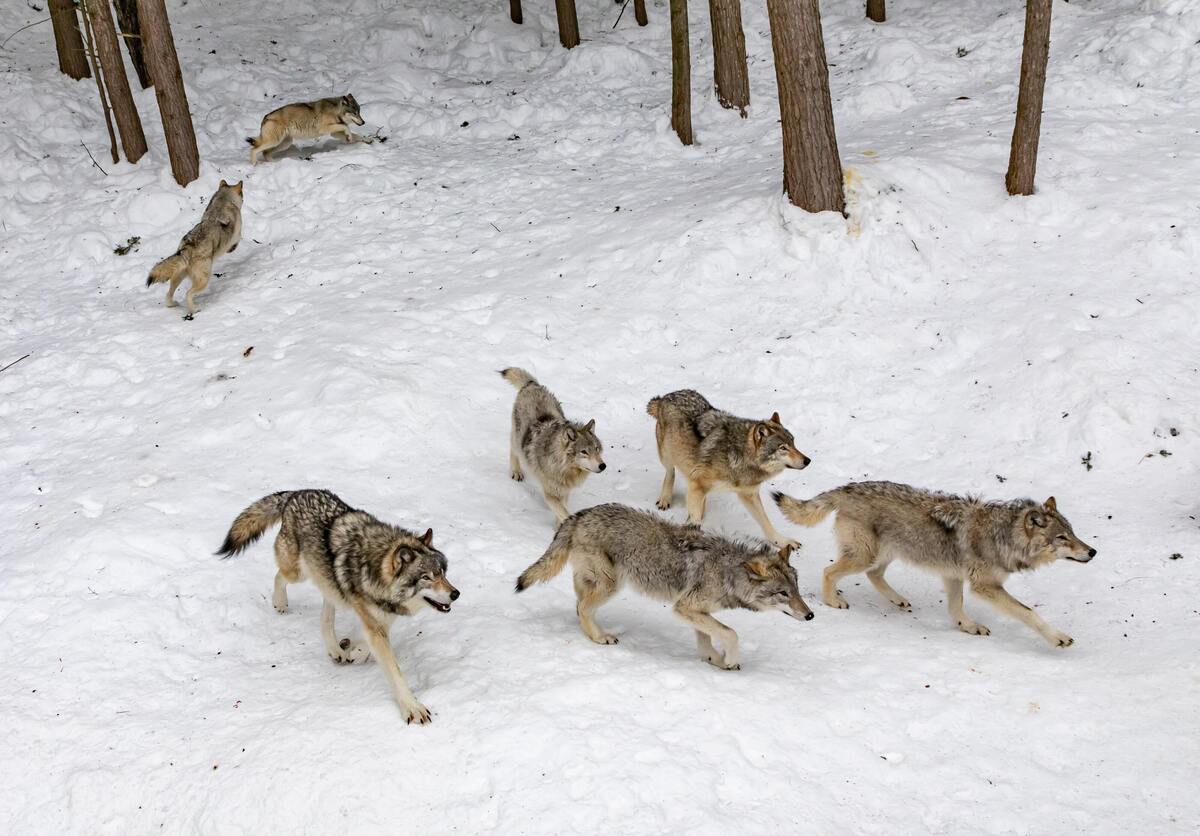
The archetype of the wolf brings with it several teachings. Initially, it teaches you to follow your intuitive nature so that, based on it, you can trace the essential strategies to achieve your goals.
The archetype of the wolf also reminds us that, many times, silence is necessary to obtain information by observing the environment and, from his keen eye, manage to find the best way to reach your destination.
Through his social characteristics, the wolf shows that it is through the sense of community that one can reach a state of harmony, balancing his intelligence, intuition and emotions for the benefit of his community, for it is only through the sense of community that great deeds are achieved.
By living in a pack, the wolf shows that family is not only those people who begot us or who maintain blood ties with us, but also those who walk with us and support us in our journey.
Finally, the wolf shows that there is nothing to fear, and should danger arise, you have the ancient power within you that will be able to awaken your inner howl, marking your territory and bringing you the security you so desperately need.

